East Coast
Arielle Kommentare 2 Kommentare
Unlike the indented west coast, the east coast of Britain is straight and shallow. It does not offer natural shelteres in bays or lochs and harbours are usually built in the mouth of rivers with a tendency to silt. Some are protected by huge breakwaters, and are accessable at all states of tide, like Newcastle or Sunderland, others are tidal harbours that can be entered only around highwater, challenging the sailor to reach harbour at the right tide without hitting a sandbank. Still others are drying harbours.

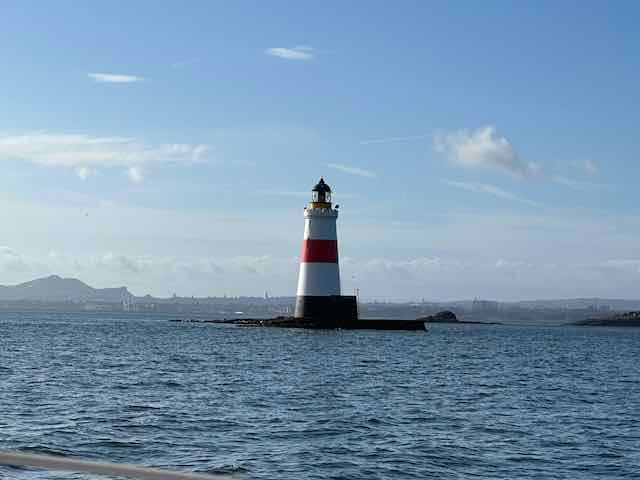
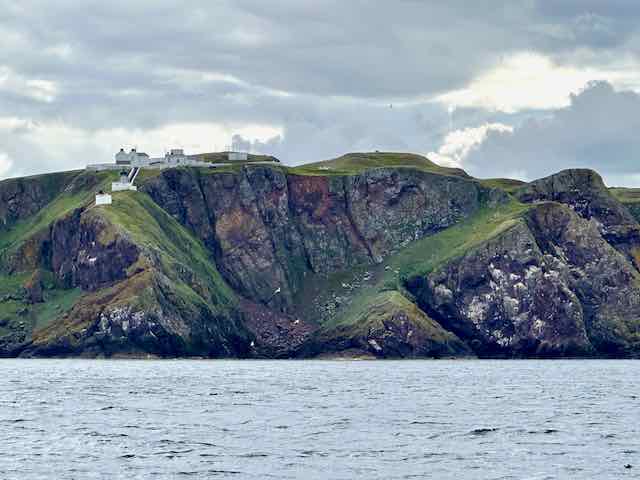
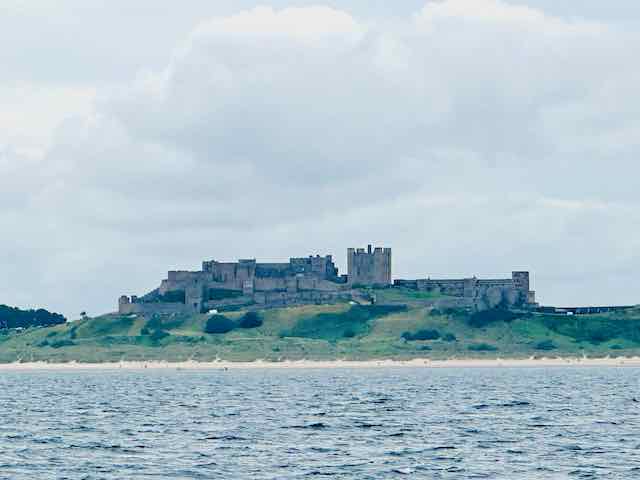
Eyemouth
Coasting down south, the first harbour we ran across on our route was Eyemouth. Formidable rocks, the „Hurkars“, are lurking at the harbour entrance. Steering a course of 174 degrees onto the leading mark of the red port side pier-beacon will keep you out of mischief, so we had read in a pilot book. We got in at half-tide, the long narrow pierheads rising high around us. After passing the outer basin packed with fisher boats and supply vessels for the offshore wind farms, we were directed by the harbourmaster inside to a mooring on a pontoon on the riverside quay. Here we lay comfortably between small fishing vessels and stacks of lobster pots.
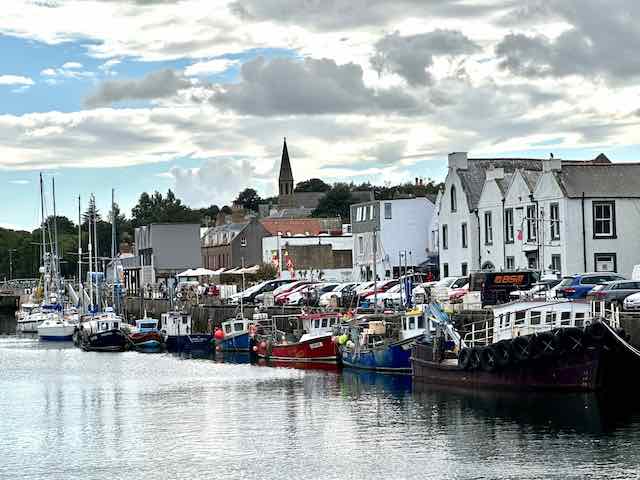
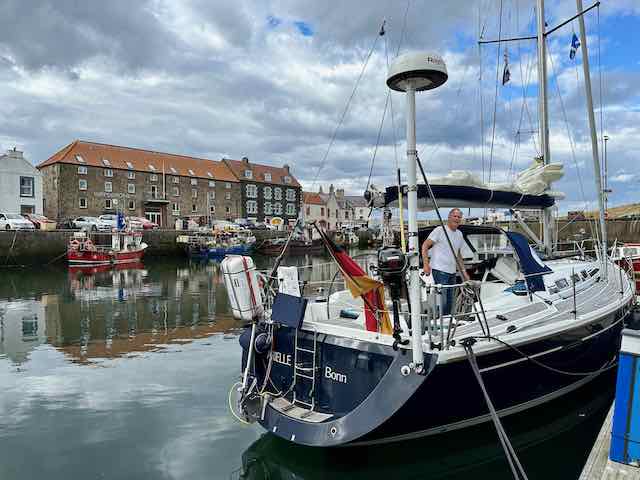
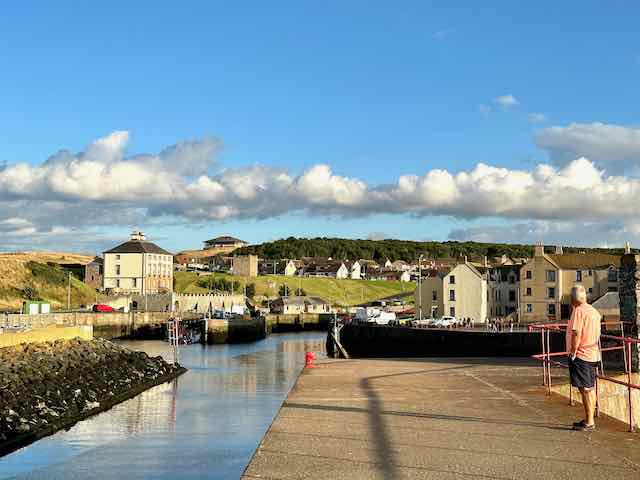
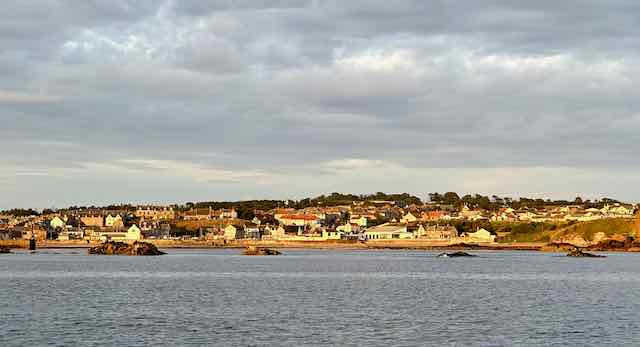
Amble
It was time to say goodby to Scotland. I took down the Scottish flag (blue with the white St. Andrews cross) and hailed the British ensign (red with the Unionjack in its right upper corner) as the river Tweed lay abeam of us. The day had begun sunny with a fair breeze. Passing the Farne Islands on the inner fairway, we got the chance to have a look at the castle and priory of Lindisfarne. Here in 634 St. Aidan taught gentleness and the fear of god to all Northumbria. And here we met St. Cuthbert again, the shepherd boy who became a mad, holy hermit and later the bishop of Lindisfarne. British people with a Catholic upbringing still shiver with inward awe at the name Lindisfarne.
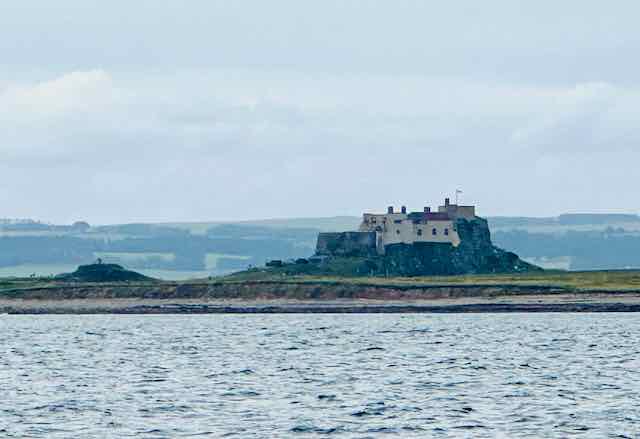
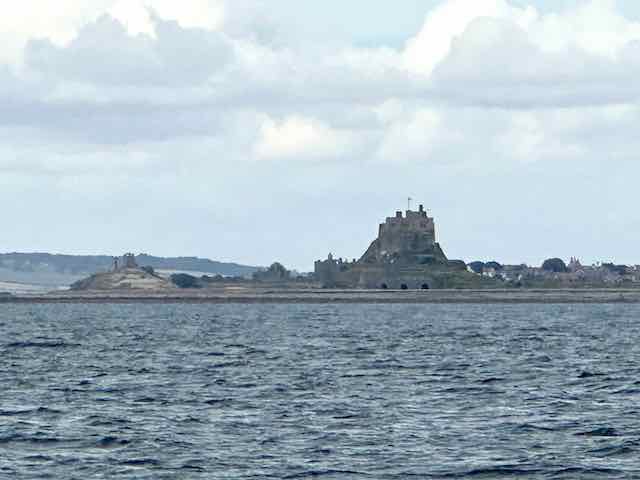
As we sailed on the wind died away and fog began creeping down from the low cliffs. In the mist and rain the entrance of Amble harbour proved as nightmarish as I had read about it in a book written in 1988: A dark wooden pier gruesomely dilapidated with its walkbords partly fallen off and an unaccountable row of sticks in the water with large cracks. Still marvelling at the sight of it, I noticed the water getting shallower and in an instant steered over to the other side where people on a outbound boat were already gesturing me to do so. At the entrance to the marina there is a cill for retaining water in the basin. An hour before HW we had 1,8 m of water under our keel. Now it was on us to caculated when the tide would allow us to leave the next day, which we did and concluded that 3 hours before HW we would have sufficient water under our keel.
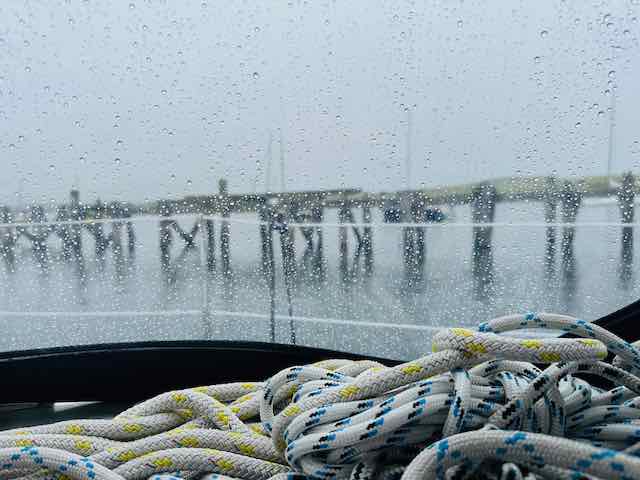
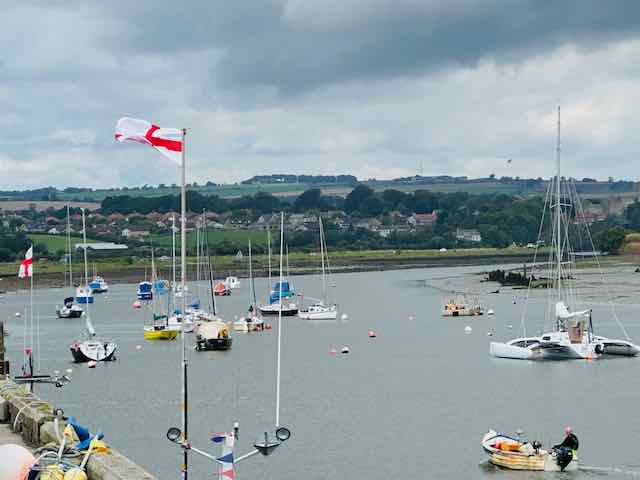
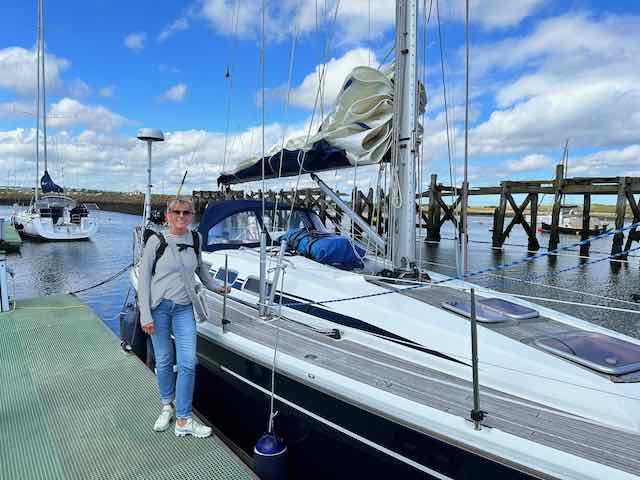
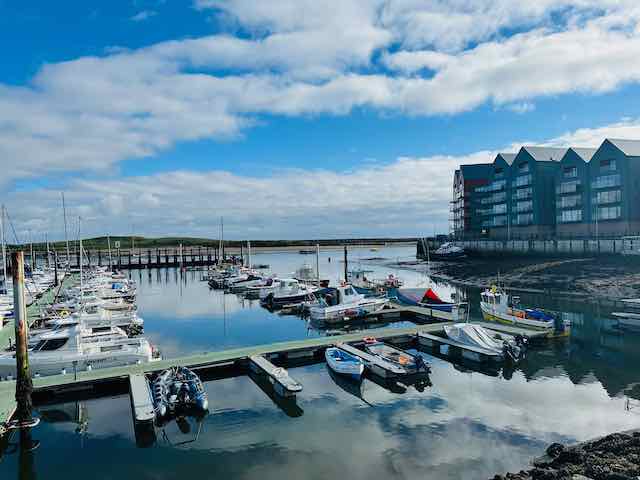
This left us time the next morning to examine the surroundings a bit. Amble in its prime time was a coal-carrying port. The marina was built in the 80ies in the silted-up coal-ship dock, at the mouth of river Coquet. It was a pleasure strolling up along the river towards the towering shape of Warkworth Castle a mile away. Warkworth lying in the bow of the meandering river had a very pleasant English touch. We returned to Amble for a quick lunch at the smart sea-side village. The time had come for us to set off for crossing the North Sea back home.
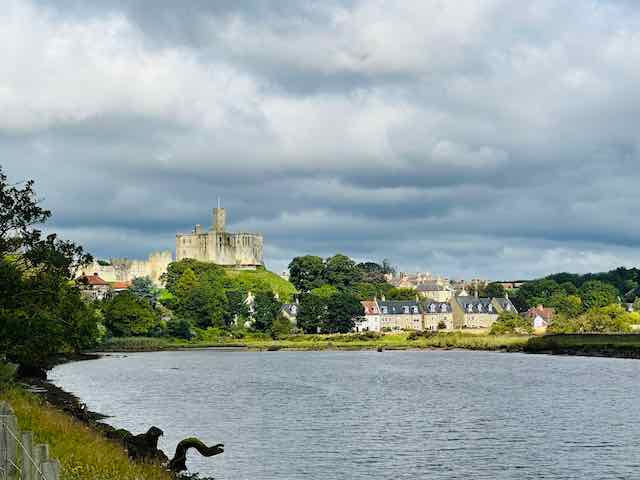
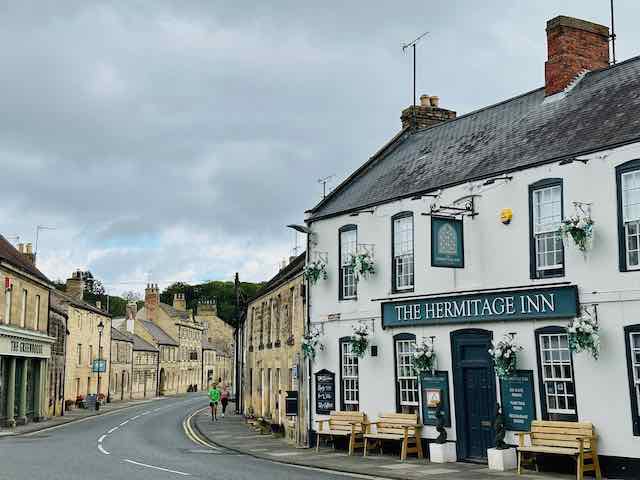
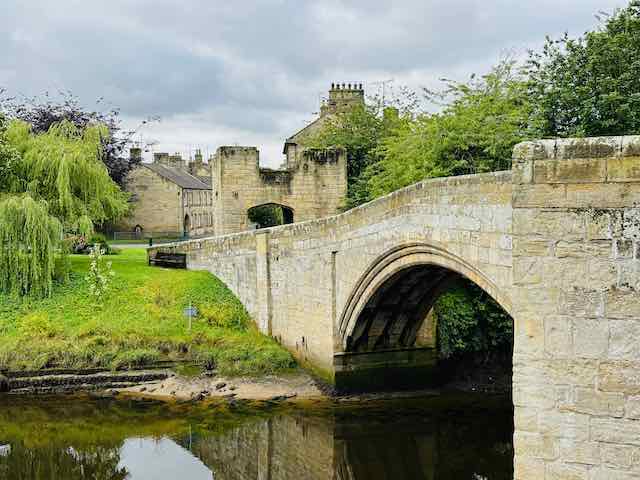
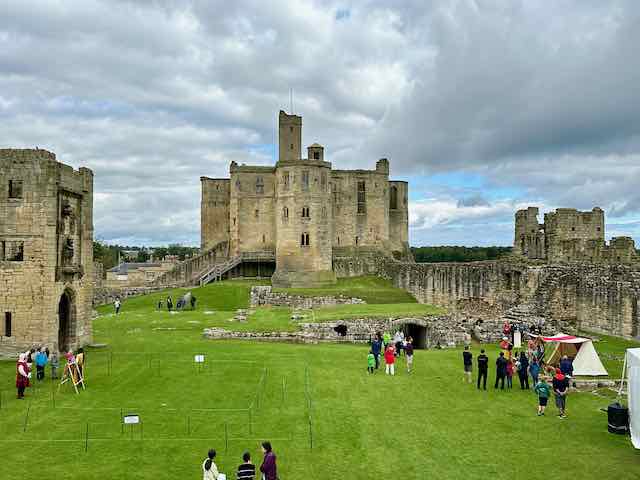
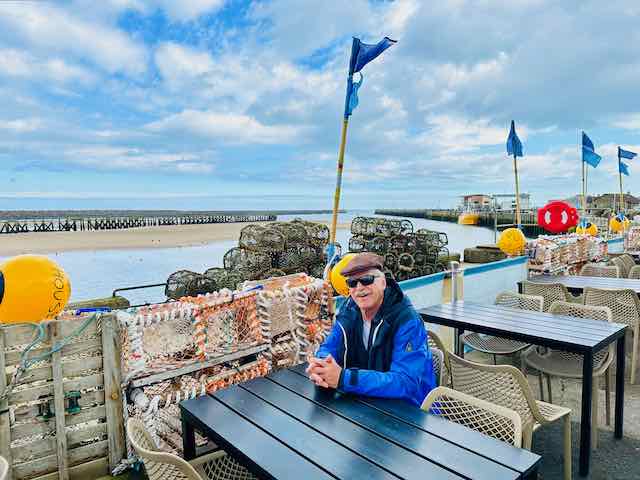
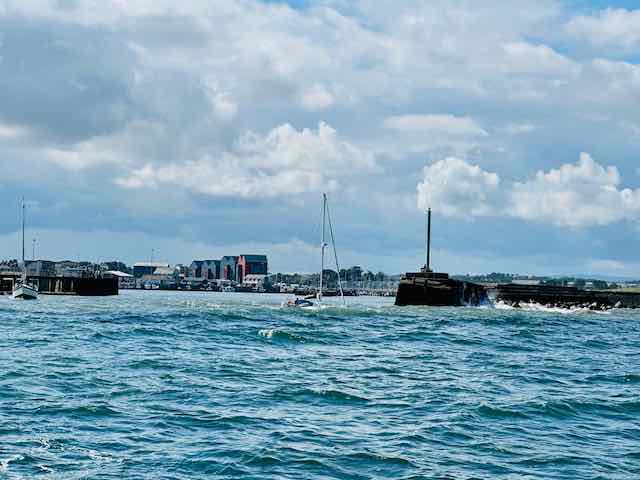
2 Gedanken zu „East Coast“
Wouw, already in Tershelling – you must have had good winds…
Happy crossing!